Search
Remove Ads
Advertisement
Search Results
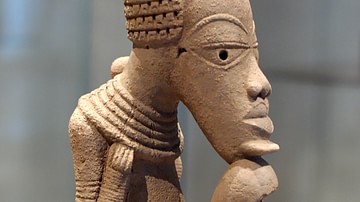
Definition
Nok Culture
The Nok culture, named after the settlement of the same name, flourished in southern West Africa (modern Nigeria) during the Iron Age from the 5th century BCE to the 2nd century CE. Famous for the distinctive terracotta sculptures of human...
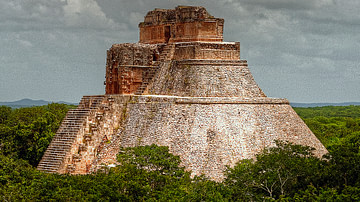
Collection
Changing Worlds: Climate & Disaster in Antiquity
Although climate change has today become a much bigger and more globalized problem than in the past, ancient peoples did have to contend with local events that severely disrupted or even ended their way of life as they knew it. A long series...
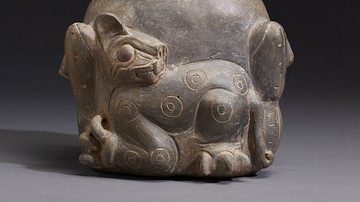
Definition
Chavin Civilization
The Chavin civilization flourished between 900 and 200 BCE in the northern and central Andes and was one of the earliest pre-Inca cultures. The Chavin religious centre Chavin de Huantar became an important Andean pilgrimage site, and Chavin...
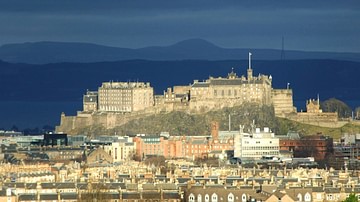
Definition
Edinburgh Castle
Edinburgh Castle, towering atop Castle Rock, has served Scotland for centuries, at one time or another acting as a fortress, royal residence, seat of government, armoury, and prison. The scene of countless sieges, royal births and deaths...
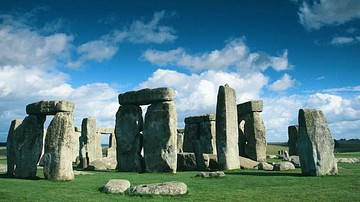
Article
The Stonehenge Burials
A great deal has been written about why the prehistoric monument of Stonehenge, in Wiltshire, southern England, was constructed. Perhaps it was designed as a temple to the ancestors, an astronomical calendar, a healing centre or a giant computer...
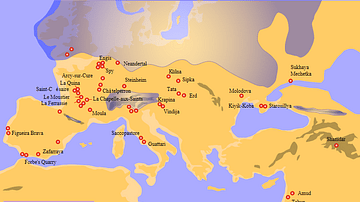
Image
Neanderthal sites
Map showing sites associated with classic Neanderthals. The depicted ice volume corresponds with the maximum extent of the ice during glaciations.

Image
Venus of Brassempouy
The Venus of Brassempouy is one of the earliest known realistic representations of a human face. It belongs to the Gravettian culture of Upper Palaeolithic Europe and was probably carved between c. 26,000 and c. 24,000 years ago. It was made...
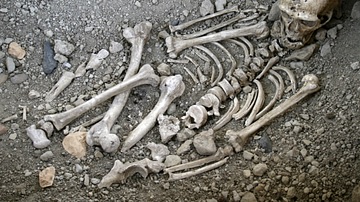
Image
Neanderthal Burial, La Chapelle-aux-Saints (reconstruction)
Reconstruction of the Neanderthal burial at La Chapelle-aux-Saints, France, on display at Musée de La Chapelle-aux-Saints, Corrèze, France.
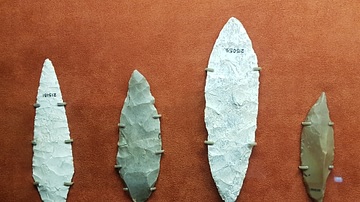
Image
Solutrean Spear Points
Palaeolithic spear points belonging to the Solutrean industry which flourished in what is now southwestern France between c. 21,000-c. 17,000 years ago. They were made by early modern humans (Homo sapiens). Points shaped like laurel leaves...

Image
Neanderthal Skeleton & Reconstruction
Skeleton and reconstruction of the La Ferrassie 1 Neanderthal found in France, as seen in an exhibit in the National Museum of Nature and Science, Tokyo, Japan.